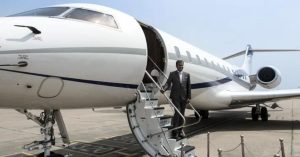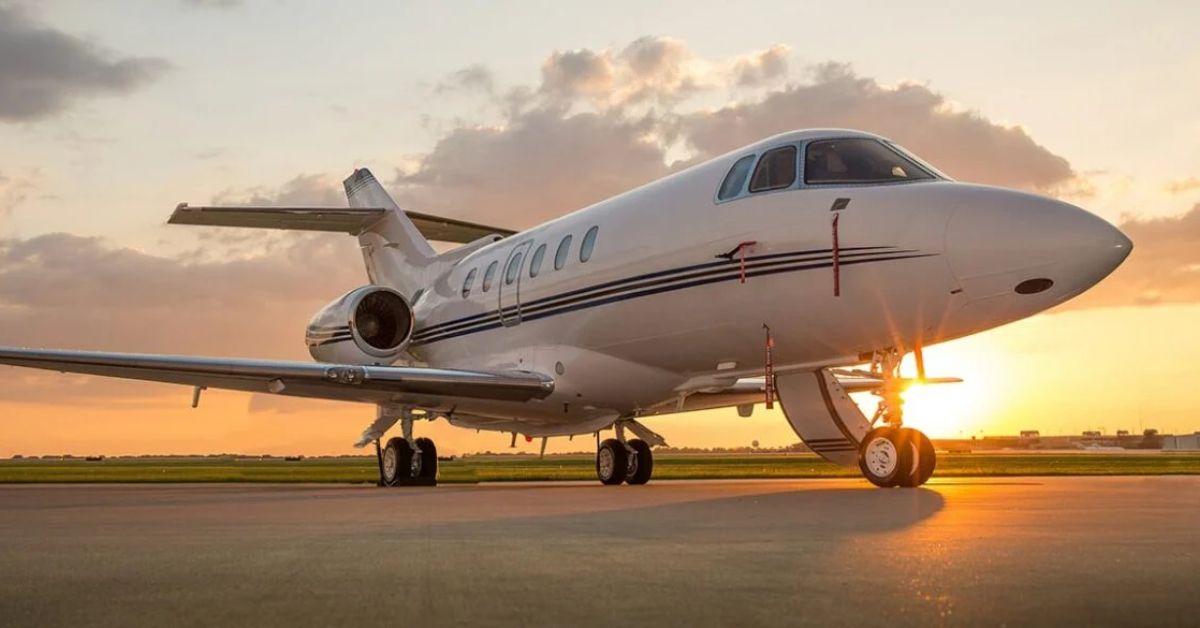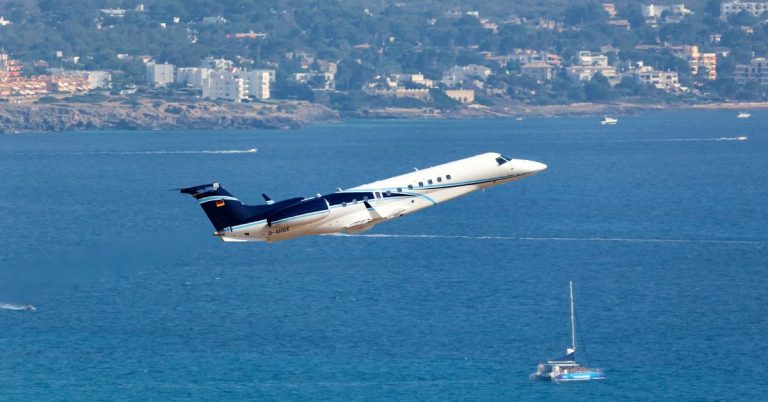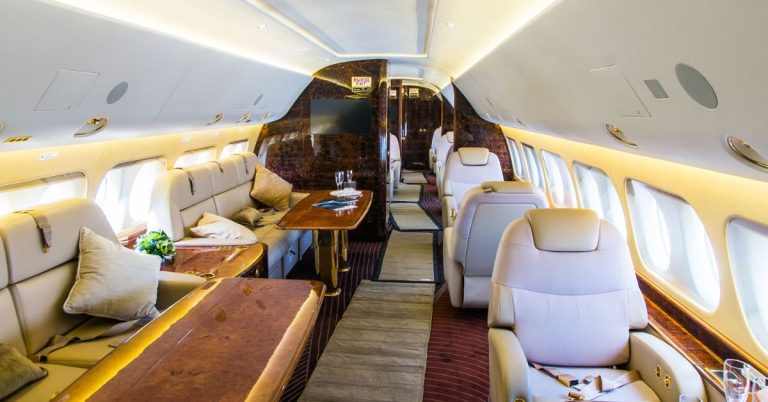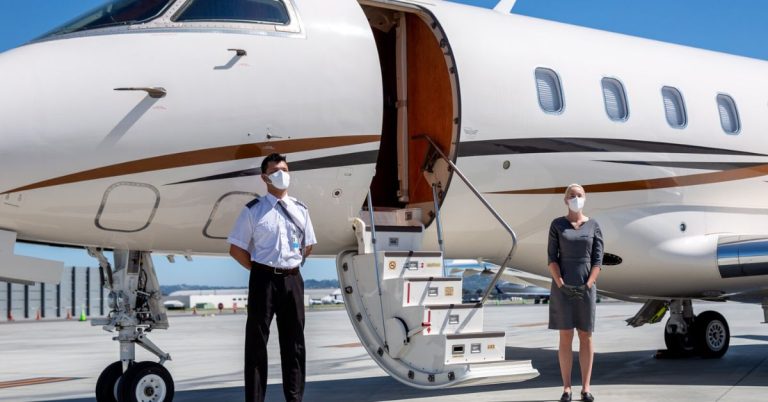Private jets have long symbolized luxury and exclusivity in global aviation. However, perceptions about private jet travel often rely on stereotypes and incomplete information, giving rise to many persistent private jet myths. These myths shape public opinion, policy debates, and industry narratives, sometimes obscuring the realities of private aviation operations and regulations.
As the business aviation sector grows and evolves, it becomes crucial to critically examine the facts behind common beliefs about private jets. This article aims to clarify misconceptions by exploring the regulatory framework, industry developments, environmental considerations, and operational realities surrounding private jets. Drawing upon credible sources such as the Directorate General of Civil Aviation (DGCA), Federal Aviation Administration (FAA), and European Aviation Safety Agency (EASA), this investigation seeks to provide a clear, fact-based understanding of private jet myths and their implications for the aviation industry.
By unpacking these myths with evidence and expert perspectives, readers will gain insight into the complex regulatory environment and operational nuances of private jets, contributing to more informed discussions about their role in modern air travel.
Common Private Jet Myths Debunked
The aviation industry is rife with misconceptions, and private jet myths are among the most persistent. These myths influence how the public, policymakers, and even stakeholders perceive private aviation. A careful examination of these myths reveals the reality behind private jet operations, costs, environmental impact, and regulatory oversight.
Myth 1: Private jets are exclusively for the ultra-rich and celebrities.
While it is true that many private jet owners are wealthy individuals, the rise of fractional ownership and jet card programs has democratized access to private aviation. According to industry reports, business travelers, corporations, and even small groups now regularly use private jets, broadening the user base beyond traditional luxury clientele. This expansion challenges the simplistic notion embedded in many private jet myths.
Myth 2: Private jets are environmentally irresponsible compared to commercial flights.
Environmental concerns dominate many narratives around private jets. It is often claimed that private jets produce disproportionately high emissions per passenger. While private jets do have higher emissions per hour flown, studies from the International Council on Clean Transportation (ICCT) indicate that innovations in sustainable aviation fuels (SAF) and improvements in engine efficiency are narrowing this gap. Some of the best private jets today are designed for fuel efficiency and reduced emissions, as highlighted in our guide to the best private jets. Regulatory agencies like DGCA and EASA are actively encouraging the adoption of greener technologies, addressing one of the key issues embedded in private jet myths.
Myth 3: Private jet travel is always prohibitively expensive and inaccessible.
Contrary to popular belief, private jet usage can be cost-effective for certain business needs. For example, time-sensitive travel, remote location access, and group flights can justify the expense relative to commercial options. Fractional ownership and charter services offer flexible pricing models, which dispute the notion that private jets remain an exclusive domain due to cost, a critical component of many private jet myths. Many individuals can now lease private jets or even book single seats, making private jet travel more accessible than ever learn how to book a seat on private jets.

Myth 4: Private jets operate without regulatory oversight.
A common misconception is that private jets evade strict regulations that commercial airlines face. This is untrue. Aviation authorities worldwide, including the DGCA, FAA, and EASA, impose rigorous certification, maintenance, and operational requirements on private jets. These regulations ensure safety, security, and environmental compliance, directly countering this pervasive private jet myth. For instance, questions about aircraft safety and age are addressed in detail in our article on is a 20-year-old private jet safe.
Myth 5: All private jets are luxurious and extravagant.
Private jets vary widely in size, configuration, and amenities. From ultra-luxury models to more functional jets, you can explore the spectrum in our overview of billionaire luxury private jets. Not all jets are grandiose; many are functional, optimized for efficiency or specific business purposes. This diversity challenges the oversimplified luxury stereotype present in numerous private jet myths.
Myth 6: Private jets contribute disproportionately to air traffic congestion.
While private jets constitute a smaller percentage of total flights, their operational flexibility means they often use smaller airports, alleviating pressure on major hubs. Additionally, empty leg flights help optimize operations and reduce unnecessary traffic more on empty leg flights. Aviation authorities monitor airspace usage closely, and ongoing technological advances in air traffic management continue to address congestion concerns related to private jet operations.
Myth 7: Private jets don’t follow the same safety standards as commercial airlines.
Safety standards for private jets are often misunderstood. DGCA regulations and international guidelines mandate comparable safety protocols, including pilot training, aircraft maintenance, and operational audits. Data shows private jets maintain strong safety records, challenging another frequent claim in private jet myths. You can learn more about the safety features of top aircraft in our post on the safest private jet in the world.
Myth 8: Private jets only fly internationally, not for domestic routes.
Private jets operate globally on both international and domestic routes. Many flights are short-haul, connecting cities underserved by commercial airlines. This operational diversity contradicts the myth that private jets are reserved only for long-haul international travel. This is especially common in countries like India, where domestic private jet operations are growing private jets in India.
By addressing these private jet myths with authoritative data and regulatory insights, this section aims to illuminate the realities of private aviation, setting the stage for deeper discussions on policy, environment, and industry trends.
Regulatory Landscape of Private Jet Operations
Private aviation, including private jet operations, is subject to a comprehensive regulatory framework designed to ensure safety, environmental compliance, and operational integrity. Dispelling the private jet myths around regulatory oversight requires understanding the role of global aviation authorities and recent policy updates shaping the sector.
Key Regulatory Authorities
Globally, agencies such as the Directorate General of Civil Aviation (DGCA) in India, the Federal Aviation Administration (FAA) in the United States, and the European Aviation Safety Agency (EASA) oversee private jet operations alongside commercial aviation. These bodies establish certification processes for aircraft, licensing standards for pilots, and enforce rigorous maintenance and operational regulations.
The DGCA’s regulations, for example, stipulate detailed guidelines for private aircraft certification, pilot qualifications, and airworthiness standards. Similarly, the FAA’s Part 135 regulations govern on-demand and charter operations, which include most private jet flights. EASA’s regulations harmonize safety standards across European member states, providing a unified framework that private jet operators must follow. For details on how long private jets can fly non-stop, see our article on can a private jet fly for 12 hours.
Recent Regulatory Updates
Recent years have seen regulatory adaptations aimed at addressing environmental concerns and technological advancements in private aviation. For instance, the DGCA introduced stricter noise abatement procedures for business jets operating in India, reflecting global trends toward minimizing aviation’s environmental footprint.
In the United States, the FAA has begun promoting the use of sustainable aviation fuels (SAF) within private aviation sectors, encouraging operators to reduce carbon emissions without compromising operational standards. EASA’s “Clean Aviation” initiatives similarly push for greener technologies in business jets, aiming to phase in new emissions targets by 2035.
Safety and Operational Compliance
One major private jet myth is that these aircraft operate with lax safety oversight. In reality, regulatory agencies enforce comprehensive safety protocols equivalent to those governing commercial airlines. Pilot training requirements, mandatory inspections, and flight operation monitoring ensure private jets meet stringent standards. Any deviation or incident is subject to investigation by aviation safety boards, with corrective actions mandated.
Environmental Regulations
Environmental policies increasingly influence private jet operations. Noise restrictions near urban airports, emission caps, and carbon offset mandates are now common. Private jet operators must comply with these regulations to secure operating permits and landing rights. Aviation authorities, including DGCA and EASA, regularly update environmental standards, requiring ongoing adaptation by the private aviation industry.

Balancing Regulation and Innovation
While regulation ensures safety and sustainability, authorities also seek to support innovation within private aviation. Flexible frameworks accommodate emerging technologies like electric propulsion and digital air traffic management systems. This balance helps dismantle private jet myths that paint the sector as resistant to change or oversight.
Industry Trends and Technological Developments
The private jet sector has experienced significant transformations driven by evolving customer demands, technological innovation, and changing market dynamics. Understanding these trends is essential to dispel common private jet myths related to exclusivity, cost, and sustainability.
Expansion of Access Models
Fractional ownership and jet card programs have emerged as popular alternatives to outright aircraft ownership. These models provide businesses and individuals flexible, cost-effective access to private jets, thereby broadening the market beyond the traditional wealthy elite. The increasing adoption of such programs directly challenges the private jet myth that private jet travel is limited to an exclusive few.
Technological Advancements
Advances in aircraft design and propulsion systems are reshaping the industry. Newer private jets incorporate fuel-efficient engines and lightweight composite materials, reducing emissions and operational costs. Furthermore, the development of sustainable aviation fuels (SAF) is gaining momentum, supported by regulatory agencies encouraging their use in business aviation. Additionally, private jets can reach impressive speeds, as detailed in how fast do private jets fly
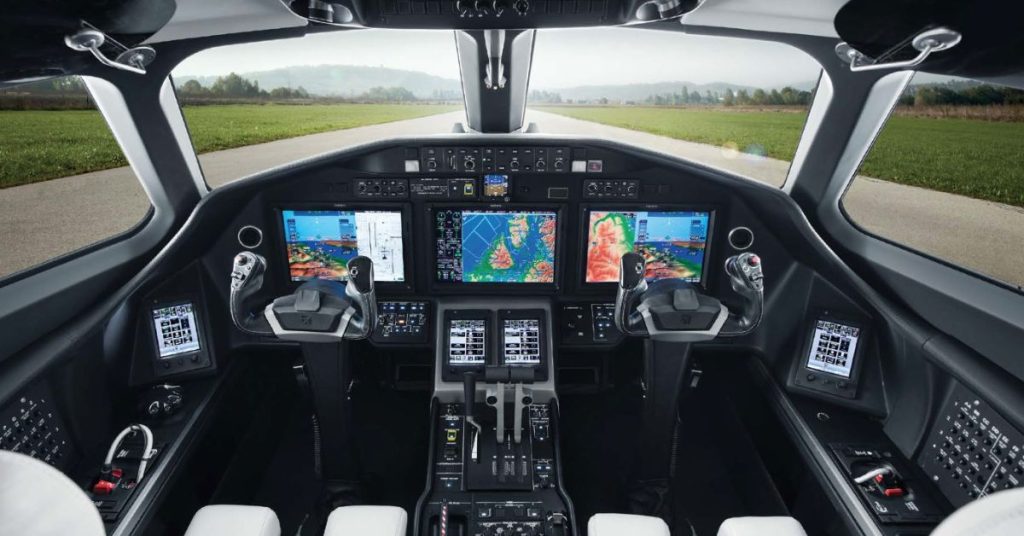
Emerging electric and hybrid propulsion technologies promise further reductions in environmental impact. Several manufacturers are testing electric vertical take-off and landing (eVTOL) aircraft, which could revolutionize regional private travel by combining efficiency with lower noise and emissions.
Impact of the COVID-19 Pandemic
The COVID-19 pandemic accelerated demand for private jet travel as travelers sought safer and more flexible alternatives to commercial airlines. This surge prompted industry stakeholders to innovate rapidly, expanding digital booking platforms and enhancing health safety protocols. The pandemic’s influence on market growth and operational adaptation counters the private jet myth that this mode of travel is outdated or inflexible.
Future Outlook
Industry reports forecast steady growth in the private jet market, driven by emerging economies and evolving business needs. Market analysts highlight ongoing investments in green technologies and digital transformation as key factors shaping the future. This trajectory reflects an industry actively addressing environmental and operational challenges, thereby debunking myths that private aviation resists change.
Environmental Considerations and Policy Responses
Environmental concerns remain central to public discourse on private aviation, fueling many private jet myths regarding sustainability and ecological impact. This section examines the factual environmental footprint of private jets, industry efforts toward greener practices, and regulatory responses.
Environmental Footprint of Private Jets
Private jets, by design, generally emit more carbon dioxide per passenger than commercial flights due to smaller passenger loads and higher fuel consumption per seat. However, studies from the International Council on Clean Transportation (ICCT) highlight that the overall share of private jets in total aviation emissions is relatively small, accounting for less than 2% globally.
Despite their lower volume, the private aviation sector acknowledges its environmental responsibility. Technological advancements in engine efficiency, sustainable aviation fuels (SAF), and optimized flight operations are progressively reducing emissions per flight hour.
Industry Initiatives for Sustainability
The private jet industry is increasingly adopting carbon offset programs to mitigate environmental impact. Leading operators invest in reforestation projects and renewable energy initiatives to balance emissions. Additionally, collaborations between manufacturers and fuel suppliers aim to scale the production and usage of SAF specifically tailored for business jets.
Many private jet operators voluntarily report emissions data, fostering transparency and encouraging continuous improvement. For a look at private jets that prioritize eco-friendly performance, check our best private jets guide.
These steps directly counter the private jet myths portraying the industry as environmentally negligent.
Regulatory Policy Responses
Regulatory bodies such as the DGCA, FAA, and EASA have introduced environmental policies targeting aviation emissions and noise pollution. These include limits on aircraft noise levels, emissions trading schemes, and incentives for SAF adoption.

Internationally, the Carbon Offsetting and Reduction Scheme for International Aviation (CORSIA) under ICAO provides a global framework compelling operators to offset emissions above baseline levels. Private jet operators engaged in international flights fall within this scheme’s scope, illustrating regulatory reach.
Challenges and Future Directions
Balancing environmental responsibility with operational demands remains a challenge. High costs and limited SAF availability constrain rapid industry-wide adoption. Nevertheless, ongoing research into electric and hybrid aircraft technologies offers promising avenues for reducing the environmental impact of private jets.
Overall, the environmental narrative surrounding private jets is evolving beyond myths toward a fact-based understanding shaped by innovation and regulation.
Safety and Security in Private Jet Travel
Safety and security are paramount concerns in aviation, and the domain of private jets is no exception. Addressing widespread private jet myths about lax standards, this section details the regulatory framework, operational protocols, and safety records that govern private jet travel.
Safety Regulations and Standards
Private jets are subject to stringent safety regulations enforced by agencies such as the DGCA, FAA, and EASA. These regulations cover pilot certification, aircraft maintenance, operational procedures, and emergency preparedness. For example, FAA’s Part 135 regulations apply to most private charter operations, mandating rigorous oversight similar to that of commercial airlines.
Maintenance standards require regular inspections and timely repairs to ensure aircraft airworthiness. Pilots operating private jets undergo continuous training and recurrent proficiency checks, aligning with international safety protocols. More on safety standards can be found in our review of the safest private jet in the world.
Comparison with Commercial Aviation Safety
Contrary to some private jet myths, private jets uphold safety standards comparable to commercial airlines. Statistical analyses show that business aviation, including private jets, maintains an excellent safety record, with incidents significantly lower than in other modes of transport.
The smaller size and operational flexibility of private jets often allow for customized safety protocols tailored to specific flight profiles and customer requirements, further enhancing safety outcomes.
Security Measures
Security protocols for private jets encompass passenger screening, access control, and cybersecurity measures. Private jet operators frequently coordinate with airport authorities and security agencies to ensure secure boarding and secure flight operations.
Given the discreet nature of private aviation, security procedures often include bespoke risk assessments and tailored solutions, maintaining high standards without compromising operational efficiency.
Incident Investigation and Transparency
When incidents occur, they are investigated thoroughly by national aviation safety boards. Reports are publicly available, contributing to transparency and continuous safety improvements within the private jet sector.
This systematic approach to safety and security effectively dispels the private jet myth that private aviation operates with insufficient oversight.
Global Aviation Developments Impacting Private Jets
Global aviation policies and geopolitical shifts significantly influence private jet operations, shaping industry practices and regulatory compliance. Understanding these developments is essential to debunk private jet myths related to accessibility, regulation, and cross-border operations.
International Agreements and Policies
International civil aviation is governed by frameworks established by organizations like the International Civil Aviation Organization (ICAO), which sets standards for safety, security, and environmental impact. These agreements affect private jets by harmonizing operational rules and facilitating cross-border travel.

Bilateral air service agreements between countries also regulate private jet movements, including landing rights, overflight permissions, and customs procedures. Changes in these agreements can impact private jet accessibility and costs, contradicting myths that private jets operate without international restrictions. Many private jets are housed in specific locations worldwide, which you can explore in where do people keep their private jets.
Geopolitical and Airspace Considerations
Geopolitical events such as conflicts, sanctions, or diplomatic tensions can alter airspace availability and flight routes for private jets. For example, airspace closures or restrictions may require rerouting, impacting operational efficiency and costs.
Recent sanctions affecting certain regions have led to adjustments in private jet itineraries, underscoring the sector’s sensitivity to global political climates. These realities challenge the misconception that private jets operate freely without geopolitical constraints.
Cross-Border Taxation and Customs
Taxation and customs regulations vary widely across jurisdictions, affecting private jet operations. Import duties, value-added taxes (VAT), and environmental levies can influence ownership costs and operational expenses.
Some countries impose specific taxes on private jet fuel or landing fees, reflecting efforts to regulate environmental impact and revenue generation. Such policies demonstrate the regulatory attention private aviation commands globally, refuting the notion embedded in some private jet myths that the sector is lightly taxed or regulated.
Recent Policy Changes
In recent years, several countries have introduced policies aimed at increasing transparency and oversight of private jet use, including mandatory flight data reporting and emissions tracking. These changes highlight a trend toward greater accountability in private aviation.
For instance, the European Union’s Emissions Trading System (ETS) now includes certain business aviation flights, pushing operators toward environmental compliance and reinforcing regulatory rigor.
Conclusion
The widespread private jet myths surrounding exclusivity, environmental impact, cost, and regulation often overshadow the complex realities of private aviation. This article has examined these misconceptions through the lens of authoritative data, regulatory frameworks, and industry developments.
Private jets are no longer an exclusive preserve of the ultra-wealthy but increasingly accessible through innovative ownership models and charter services. Regulatory bodies worldwide—including DGCA, FAA, and EASA—enforce strict safety, environmental, and operational standards, dispelling myths about regulatory neglect. These new models include leasing and seat-booking options, helping open private aviation to a wider audience private jets for lease.
Technological advancements and sustainability initiatives are actively addressing environmental concerns, while evolving global policies continue to shape private jet operations in response to geopolitical and economic factors. Safety and security standards in private aviation remain robust and comparable to commercial airlines.
By grounding discussions about private jets in factual analysis and authoritative sources, this investigation promotes a clearer understanding of the sector. Discerning between myth and reality is vital for informed public discourse and effective policymaking in global aviation.




